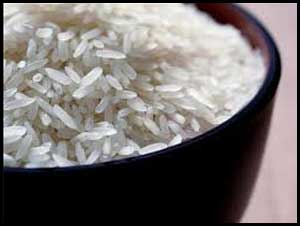- Home
- Editorial
- News
- Practice Guidelines
- Anesthesiology Guidelines
- Cancer Guidelines
- Cardiac Sciences Guidelines
- Critical Care Guidelines
- Dentistry Guidelines
- Dermatology Guidelines
- Diabetes and Endo Guidelines
- Diagnostics Guidelines
- ENT Guidelines
- Featured Practice Guidelines
- Gastroenterology Guidelines
- Geriatrics Guidelines
- Medicine Guidelines
- Nephrology Guidelines
- Neurosciences Guidelines
- Obs and Gynae Guidelines
- Ophthalmology Guidelines
- Orthopaedics Guidelines
- Paediatrics Guidelines
- Psychiatry Guidelines
- Pulmonology Guidelines
- Radiology Guidelines
- Surgery Guidelines
- Urology Guidelines
Replacing white rice with high fiber rice reduces blood sugar and risk of diabetes

Replacing white rice with high fiber rice reduces blood sugar and diabetes risk finds a new study.
Type 2 diabetes is a chronic metabolic disorder that causes the level of blood sugar to rise. Over time, high blood sugar, or hyperglycemia, can lead to complications including heart disease, kidney damage, nerve damage, eye damage, etc. By keeping blood sugar under control, one can avoid all these health problems. Eating a diet high in fiber can help keep blood sugar level stable. High fiber rice boasts of many nutrients, including fiber, despite being low in calories, making them a great food for diabetics.
Asian Indians, both in urban and rural areas, derive most of their dietary calories from refined cereals, a high intake of which has been shown to increase the risk of type 2 diabetes (T2D) and the metabolic syndrome. The commonly consumed refined cereal in south India is white rice. Now, a recent study has found that substituting regular white rice (RWR) with high fiber white rice (HFWR) during the whole day's diet is a healthier alternative for overweight Asian Indians at higher risk for developing (T2D).
The study, published in the journal Diabetes Technology & Therapeutics demonstrated that HFWR significantly reduces 24-hour blood sugar and fasting insulin and can substantially improve the dietary fiber intake.
Ranjit Mohan Anjana, Madras Diabetes Research Foundation, Chennai, India, and colleagues conducted this study to assess the 24 h glycemic responses of an HFWR diet compared to an RWR diet.
For the purpose, they carried out a randomized crossover trial in 18 overweight (body mass index, ≥23 kg/m2), non-diabetic participants (aged, 25-50 years) who received isocaloric (≈2000 kcal/day) HFWR or RWR based diets for 4 continuous days and then switched diets after 1 week of the washout period. They then compared the mean change of fasting insulin level of HFWR to RWR diet, and glucose response concentration was calculated as the incremental area under the curve (IAUC).
- The average 24 h glucose response for HFWR was significantly lower (IAUC 66.3 ± 3.1 mg-5 min/dL) than RWR (IAUC 79.8 ± 5.7 mg-5 min/dL).
- The adjusted mean change in fasting insulin levels from baseline was also lower for HFWR compared to RWR.
- HFWR elicited 34% and 30% lower 24 h glycemic and insulin response respectively, compared to RWR.

Disclaimer: This site is primarily intended for healthcare professionals. Any content/information on this website does not replace the advice of medical and/or health professionals and should not be construed as medical/diagnostic advice/endorsement or prescription. Use of this site is subject to our terms of use, privacy policy, advertisement policy. © 2020 Minerva Medical Treatment Pvt Ltd